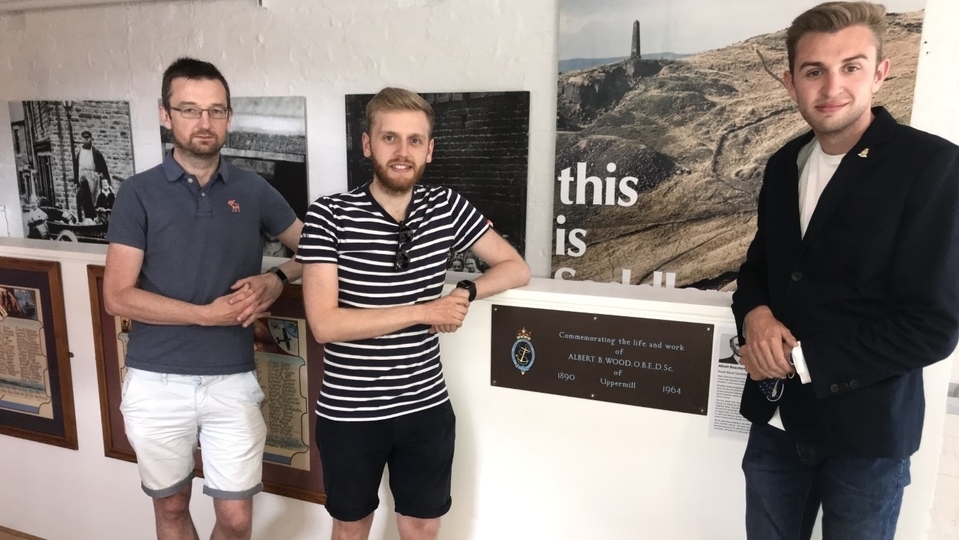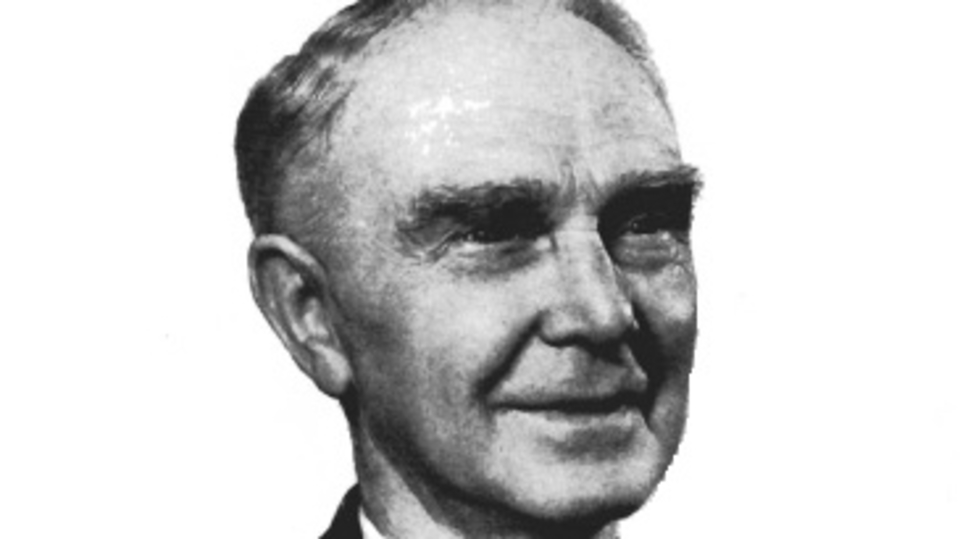Fitting salute to Saddleworth’s sonar science pioneer
Date published: 03 July 2021

Pictured (left to right) are: Historian Roy Crozier with Councillors Luke Lancaster and Max Woodvine, plus the plaque to A B Wood, after its presentation at Saddleworth Museum
A Saddleworth-born physicist whose pioneering work helped saved countless lives during two World Wars is to be finally honoured in his native Saddleworth more than 50 years after his death.
The importance of Albert Beaumont (A B) Wood’s lifetime achievements, including a personal plea for help from Sir Winston Churchill, have gone largely undetected outside his sphere of expertise.
Now, after flying under the radar for so long, a plaque has been put on permanent display at Saddleworth Museum and Gallery to salute the brilliant scientist who was born on Pickhill Lane in Uppermill, and feted on both sides of the Atlantic.
Born in 1894, A B Wood OBE, DSc. attended Huddersfield College of Technology and was involved in naval science and underwater acoustics for half a century.
Initially he worked alongside Sir Ernest, Lord Rutherford - the man credited with ‘splitting the atom’ - before he was recruited by the Admiralty in 1915 as one of two research physicists with a brief to work on anti-submarine defence.
Wood, who graduated from Manchester University almost 100 years ago, helped develop the prototype underwater sound detection ASDIC system - better known by its American name, sonar.
At the outbreak of World War II, he turned his talents to inventing counter measures to the German use of magnetic mines.
Saddleworth historian Roy Crozier presented plans for a plaque to the Parish Council earlier in 2021, telling them: “Churchill said the only thing that scared him was the U-Boat peril.
"The UK was importing vast quantities of food and if we didn’t keep shipping lanes open we would be starved out of the war.”
He continued: “The first scientific problem of the Second World War were magnetic mines the Germans again used to disrupt food supplies and raw materials.
"Churchill asked Wood personally to come and see him to discuss possible counter measures.
"AB (pictured below) is also the pioneer of British magnetic mines technology.”

The first German mine was recovered in November 1939 and Wood was described as having “great personal courage” in dealing with it.
Mr Crozier’s proposals for a plaque were supported by Parish Councillors, particularly Cllr Max Woodvine, who also represents Saddleworth South in Oldham, and he helped secure a plaque for permanent display in the scientist’s home village.
Cllr Woodvine said: ”Saddleworth has been and is made up of special people who have made special contributions to society both in and beyond the boundary of the Civil Parish.
"We should always seek to recognise them in a suitably special way so I’m proud to have played my part in saluting this pioneering physicist off Pickhill with a plaque.
"I must also thank the School and Museum for their support in doing this.”
The plaque was donated to Cllr Woodvine by Saddleworth School, where it was once displayed, with the hope of finding somewhere for it to be housed after it has spent decades in the caretaker’s cupboard.
The school’s Head Boy and Girl, Jack Sinfield and Isabella Cook, presented the plaque to the Museum in a small ceremony attended by surviving relatives of A B Wood who still live in Delph, with distant relative, Sam, studying triple science at the school today.
Do you have a story for us? Want to tell us about something going on in and around Oldham? Let us know by emailing news@oldham-chronicle.co.uk , calling our Oldham-based newsroom on 0161 633 2121 , tweeting us @oldhamchronicle or messaging us through our Facebook page. All contact will be treated in confidence.
Most Viewed News Stories
- 1New women-only gym opens in Chadderton
- 2New life-saving defibrillator installed at popular pub in Chadderton
- 3Two Oldham schools recognised as being among the top 10 in England
- 4Parents salute the school team helping children to thrive thanks to their life-changing SEND...
- 5Stalemate at problem junction continues




